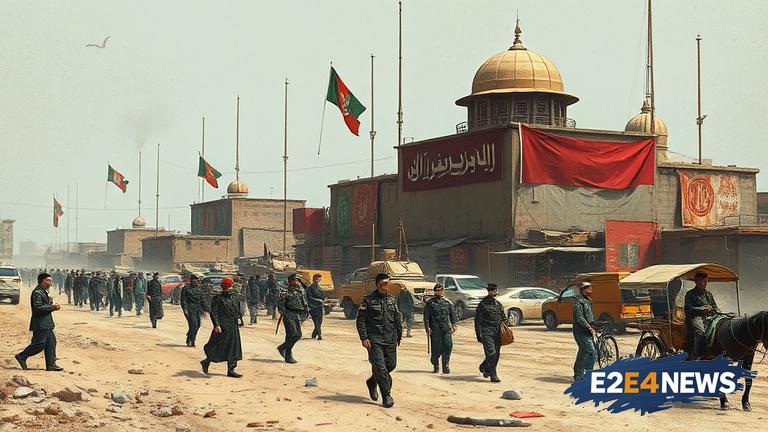The year 1975 marked a significant turning point in Afghanistan’s history, as the country was plagued by unrest and instability. Fifty years ago, the government of President Mohammed Daoud Khan was facing mounting opposition from various factions, including the communist People’s Democratic Party of Afghanistan (PDPA) and the Islamist movement. The PDPA, which was backed by the Soviet Union, was seeking to overthrow the government and establish a socialist regime. Meanwhile, the Islamist movement, led by figures such as Gulbuddin Hekmatyar, was advocating for an Islamic state based on Sharia law. The unrest of 1975 was characterized by widespread protests, demonstrations, and clashes between government forces and opposition groups. The situation was further complicated by the involvement of foreign powers, including the Soviet Union and the United States, which were vying for influence in the region. In July 1975, a group of army officers attempted a coup against the government, but it was unsuccessful. The failed coup led to a crackdown on opposition groups, with many leaders and activists being arrested or forced into exile. Despite the challenges, the government of President Daoud Khan managed to maintain power, but the unrest of 1975 marked the beginning of a long and bloody conflict that would eventually lead to the Soviet invasion of Afghanistan in 1979. The Soviet occupation lasted for nine years, during which time the country was ravaged by war and hundreds of thousands of people were killed or displaced. The conflict also had a profound impact on the region, with neighboring countries such as Pakistan and Iran becoming increasingly involved. In the 1980s, the United States, Pakistan, and other countries began to support the mujahideen, a group of Islamist rebels fighting against the Soviet occupation. The mujahideen were eventually able to drive the Soviets out of Afghanistan, but the country was left in a state of chaos and destruction. In the years that followed, various factions and warlords vied for power, leading to a period of civil war and instability. The Taliban, a radical Islamist group, eventually emerged as the dominant force in the country, imposing a strict and repressive regime on the population. The Taliban’s rule was marked by human rights abuses, suppression of women’s rights, and the destruction of cultural and historical artifacts. In 2001, the United States and its allies invaded Afghanistan, toppling the Taliban regime and establishing a new government. However, the country remains plagued by instability and violence, with the Taliban and other insurgent groups continuing to wage a guerrilla war against the government and foreign forces. Today, Afghanistan remains one of the most fragile and conflict-ridden countries in the world, with millions of people displaced and in need of humanitarian assistance. The legacy of the 1975 unrest continues to shape the country’s politics and society, with many Afghans still seeking justice and accountability for past human rights abuses. The international community has a critical role to play in supporting Afghanistan’s development and stability, but the road ahead will be long and challenging. As the country looks to the future, it is essential to learn from the lessons of the past and to work towards a more peaceful and prosperous future for all Afghans. The history of Afghanistan is complex and multifaceted, and it is essential to understand the various factors that have contributed to the country’s instability. The involvement of foreign powers, the rise of Islamist movements, and the suppression of human rights have all played a significant role in shaping the country’s trajectory. As the world looks to the future, it is essential to prioritize the needs and rights of the Afghan people, and to work towards a more just and equitable society. The story of Afghanistan is one of tragedy and resilience, and it is essential to learn from the past in order to build a better future. The country’s history is a reminder of the importance of diplomacy, dialogue, and cooperation in resolving conflicts and promoting peace. As the international community continues to engage with Afghanistan, it is essential to prioritize the needs and rights of the Afghan people, and to work towards a more peaceful and prosperous future for all.





